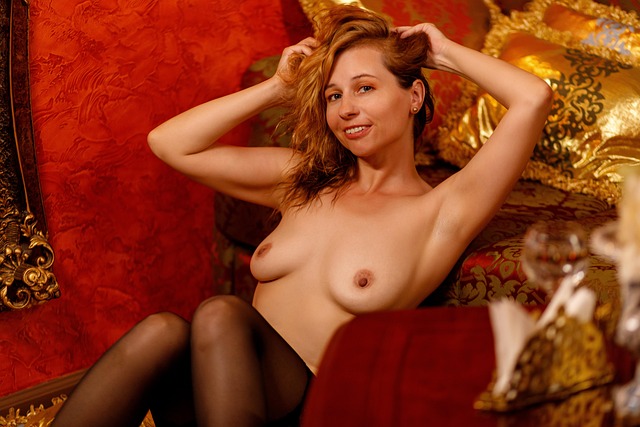best unisex perfumes
Best Unisex Perfumes: A Comprehensive Exploration
Introduction
Welcome to an odyssey through the captivating world of fragrances, where we delve into the essence of ‘Best Unisex Perfumes’. This article aims to guide readers through the intricate art of perfume creation, its global impact, and the many facets that contribute to its allure. We will unravel the secrets behind the most celebrated unisex scents, explore their historical roots, and examine how they shape our sensory experiences. Prepare to embark on a journey that transcends borders and cultures, as we uncover the universal appeal of these aromatic masterpieces.
Understanding Best Unisex Perfumes: Unveiling the Essence
Definition:
Best unisex perfumes, often referred to as gender-neutral or androgynous fragrances, are crafted with an intention to transcend traditional gender boundaries. They are designed to be appealing and suitable for individuals of all genders, offering a diverse olfactory experience that defies conventional norms.
Core Components:
- Aromatic Blend: These perfumes showcase a harmonious fusion of top notes (initial scents), heart notes (middle notes), and base notes (lasting impressions). The blend aims to create a complex and captivating olfactory journey.
- Ingredients: Natural and synthetic ingredients play a pivotal role in perfume composition. Common unisex ingredients include citrus, herbs, spices, woody notes, and floral accords.
- Longevity and Projected Scent: One of the key characteristics is its longevity—how long the scent lingers on the skin. A well-formulated unisex perfume should project a subtle yet noticeable aroma, evolving over time.
Historical Context:
The concept of unisex fragrances has evolved significantly over centuries. Historically, many ancient cultures used aromatic substances for rituals and personal adornment without adhering to strict gender categories. However, it was in the 20th century that the modern perfume industry began to explore androgynous scents, challenging the notion of fragrances being exclusively male or female. Iconic perfumes like Chanel No. 5 (1921) blurred the lines between genders, paving the way for a new wave of unisex perfumery.
Significance:
Unisex perfumes represent a significant departure from traditional scent stereotypes, offering inclusivity and personal expression. They cater to individuals who wish to break free from gender-specific olfactory expectations, fostering self-confidence and individuality. Moreover, these fragrances contribute to the diversification of the perfume industry, challenging established norms and opening doors for creative experimentation.
Global Impact and Trends
International Influence:
Best unisex perfumes have captivated the global market, with diverse cultural influences shaping their development. Key regions like Europe, North America, and Asia-Pacific have contributed unique scent profiles, reflecting local tastes and traditions. For instance, European perfumes often emphasize elegant florals and fresh notes, while Asian fragrances may blend traditional scents with modern accords.
Trends Shaping the Industry:
- Natural and Organic Ingredients: There is a growing trend towards using natural and organic ingredients, driven by consumer demand for eco-friendly products. This shift has led to innovations in perfumery, offering sustainable alternatives without compromising quality.
- Clean Fragrances: The ‘clean beauty’ movement has influenced the perfume industry, resulting in fragrances with fewer synthetic chemicals and a focus on transparency in ingredient lists.
- Cultural Fusion: Blending cultural elements from various regions has become prevalent, creating unique scent signatures that transcend geographical boundaries.
Regional Preferences:
- Europe: Known for its sophisticated and elegant perfumes, Europe favors complex blends with historical roots. French fragrances, in particular, are renowned worldwide for their refined composition.
- North America: The North American market embraces diverse scents, from bold and spicy to fresh and citrusy notes. American perfumes often reflect the country’s dynamic and multifaceted culture.
- Asia-Pacific: This region showcases a blend of traditional and modern influences, with many fragrances incorporating ancient aromatic practices while adding contemporary twists.
Economic Considerations
Market Dynamics:
The global unisex perfume market has experienced substantial growth, driven by changing consumer preferences and the rise of e-commerce. According to a recent report by Grand View Research, the market size was valued at USD 10.4 billion in 2020 and is expected to grow at a compound annual growth rate (CAGR) of 8.5% from 2021 to 2028.
Investment Patterns:
Major perfume houses have invested heavily in unisex fragrances, recognizing their commercial potential. Niche perfumers, too, are gaining recognition for their unique and creative approaches to unisex scent composition. This trend has led to a diverse market, catering to various consumer preferences and price points.
Economic Impact:
Unisex perfumes contribute to economic growth through:
- Retail Sales: The rising popularity of these fragrances drives sales in retail stores, online platforms, and specialty perfumeries.
- Tourism: Fragrance destinations attract tourists interested in exploring niche perfume houses and learning about aromatic traditions.
- Job Creation: The industry supports jobs in various sectors, from raw material suppliers to perfumers, marketers, and retailers.
Technological Advancements
Innovation in Perfume Composition:
Technology has revolutionized the way perfumes are created:
- Computer-Aided Composition (CAC): Advanced software tools enable perfumers to experiment with various scent combinations, predict olfactory interactions, and streamline the creation process.
- Analytical Chemistry: High-performance liquid chromatography (HPLC) and gas chromatography-mass spectrometry (GC-MS) aid in identifying and isolating specific fragrance compounds, ensuring consistent quality.
Sustainable Practices:
The industry is embracing eco-friendly technologies:
- Green Chemistry: Developing sustainable methods for producing perfume ingredients, reducing environmental impact, and promoting the use of biodegradable materials.
- 3D Bioprinting: This emerging technology allows for the creation of personalized perfumes by printing scent profiles tailored to individual preferences.
Digital Marketing and Sales:
The digital age has transformed how perfumes are marketed and sold:
- E-commerce Platforms: Online retailers offer a vast array of unisex fragrances, providing convenience and access to niche brands worldwide.
- Augmented Reality (AR) Technology: AR applications enable customers to virtually try on different scents, enhancing the online shopping experience.
Policy and Regulation
Regulatory Frameworks:
The perfume industry is subject to various regulations to ensure product safety and quality:
- Food and Drug Administration (FDA): In the United States, the FDA sets guidelines for cosmetic ingredients, including perfumes, maintaining safety standards.
- European Union (EU) Cosmetics Regulation: The EU has stringent rules regarding cosmetic product safety, labeling, and ingredient restrictions, applicable to all members states.
- International Organization for Standardization (ISO): ISO standards provide guidelines for perfume composition, testing methods, and quality control processes.
Labeling and Transparency:
Many countries mandate clear and transparent labeling of perfume ingredients:
- Ingredient Lists: Consumers are entitled to know the components of their fragrances, aiding in allergy prevention and personal preference decisions.
- Allergy Warnings: Labeling must include information on potential allergens, ensuring consumer safety and compliance with legal requirements.
Intellectual Property Protection:
Patents and trademarks play a crucial role in protecting unique perfume compositions:
- Copyright and Patent Laws: These legal frameworks safeguard original scent creations, preventing counterfeiting and unauthorized reproduction.
- Trademark Registration: Perfumers can register their brand names and signature scents, establishing a distinctive identity in the market.
Challenges and Criticisms
Overcoming Stereotypes:
One of the primary challenges is challenging societal stereotypes associated with fragrances. Unisex perfumes often face criticism for not adhering to traditional gender roles, prompting debates about consumer perception and marketing strategies.
Solution: Educational Campaigns:
Implementing educational initiatives can help dispel myths and inform consumers about the benefits of unisex fragrances. Marketing campaigns that showcase diverse individuals embracing these scents can foster acceptance and encourage inclusivity.
Sustainability Concerns:
The perfume industry has faced scrutiny regarding its environmental impact, particularly in relation to synthetic ingredients and packaging waste.
Strategy: Eco-Friendly Innovations:
Adopting sustainable practices, as mentioned earlier, is crucial. Niche perfumers and major brands alike can contribute by using organic ingredients, implementing eco-conscious packaging, and supporting recycling initiatives.
Counterfeiting and Piracy:
The popularity of unisex perfumes has led to a rise in counterfeits, impacting brand reputation and consumer safety.
Countermeasure: Advanced Authentication:
Perfume companies can employ advanced technologies like QR codes, blockchain, or unique scent signatures to verify the authenticity of their products, protecting consumers and ensuring brand integrity.
Case Studies
1. Tom Ford’s Ombre Le Parfum
This iconic fragrance is a prime example of a successful unisex perfume. Tom Ford’s Ombre Le Parfum (2015) offers a complex olfactory journey with notes of orange blossom, ambroxan, and creamy vanille. The scent evolves from floral-fruity top notes to a rich, woody base, appealing to a diverse range of individuals. Its sophisticated marketing campaign, featuring a diverse cast, further emphasized the perfume’s inclusive nature.
2. Dior J’Adore In Joy
Dior’s J’Adore In Joy (2020) is a vibrant and playful fragrance that celebrates joy and femininity without boundaries. Blending fruity notes of blackcurrant and pink pepper with floral accords and amber, this perfume caters to those seeking a light, cheerful scent. The campaign showcased women from different backgrounds, ages, and styles, demonstrating the universal appeal of the fragrance.
3. Creed Aventus for Him & Her
Creed’s Aventus, launched in 2014, defies gender conventions with its fresh and woody aroma. It combines notes of blackcurrant, pear, and pink pepper with patchouli, amber, and vanilla. The scent is versatile, appealing to both men and women who appreciate a modern, sophisticated fragrance. Creed’s success lies in its ability to create unisex perfumes that are distinctly masculine or feminine while remaining wearable for all.
Future Prospects
Emerging Trends:
- Personalized Fragrances: Customization is set to be a significant trend, with customers seeking unique scent profiles tailored to their preferences.
- Cultural Fusion: Blending cultural elements from multiple regions will continue to thrive, creating distinct and captivating fragrances.
- Sustainability Focus: The industry will further embrace eco-friendly practices, driven by consumer demand and regulatory pressures.
Growth Areas:
- Niche Market Expansion: Niche perfumers are expected to gain more recognition, catering to specialized scents and unique experiences.
- Digital Innovation: Augmented reality and personalized scent recommendations will enhance the online shopping experience, opening new avenues for perfume discovery.
Strategic Considerations:
- Major brands should collaborate with diverse influencers and celebrities to challenge stereotypes and promote inclusivity.
- Invest in sustainable sourcing of raw materials to meet consumer expectations and regulatory requirements.
- Explore innovative delivery methods, such as wearable technology or scent-based therapy applications, to enhance the customer experience.
Conclusion
Best unisex perfumes are not merely scents but cultural artifacts that transcend boundaries, defying conventions, and fostering inclusivity. They represent a harmonious blend of art, science, and creativity, captivating the senses and shaping societal perceptions. As the global market continues to evolve, these fragrances will play an increasingly significant role in personal expression, cultural exchange, and economic growth. By embracing innovation, sustainability, and diversity, the perfume industry can ensure that best unisex perfumes remain a vibrant and ever-changing aspect of our lives.
FAQ Section
Q: What makes a fragrance unisex?
A: A unisex fragrance is designed to appeal to all genders, rather than being marketed solely for men or women. It achieves this by using ingredients and scent profiles that transcend traditional gender-specific olfactory expectations.
Q: Are there any health risks associated with wearing unisex perfumes?
A: When used as directed, unisex perfumes pose minimal health risks. However, individuals with sensitive skin or allergies should always test a new fragrance on a small area first. Ingredient lists and clear labeling help ensure safe usage.
Q: How do I choose the right unisex perfume for me?
A: Personal preference is key. Consider your lifestyle, mood, and the occasions you’ll wear it. Sample different scents and trust your instincts. Online reviews and recommendations from trusted sources can also guide your decision.
Q: Can technology truly replicate natural fragrance notes?
A: While technology has advanced significantly, replicating natural fragrance notes precisely is challenging. Synthetic ingredients are often used to enhance or create specific olfactory experiences, offering both benefits and trade-offs in terms of authenticity and longevity.
Q: Are there any famous perfumers known for their unisex creations?
A: Indeed! Notable perfumers like Francis Kurkdjian, Olivier Creten, and Annick Goutal have created iconic unisex fragrances that have left a lasting impact on the industry. Their innovative compositions continue to inspire new generations of perfumers.













